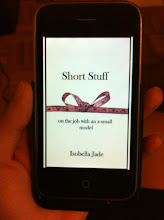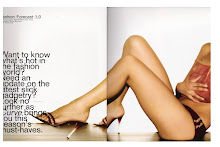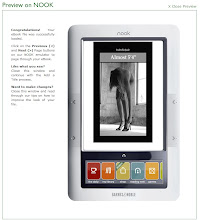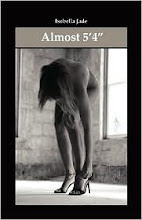
Inside Apple stores, a certain aura enchants the faithful
Katie Hafner in New York
December 28, 2007
IT WAS 2am but in the subterranean retailing mecca in midtown Manhattan, otherwise known as the Apple store, it might as well have been mid-afternoon.
Late one night shortly before Christmas, parents pushed strollers and tourists straight off the plane mingled with New Yorkers clicking through iPod playlists, cruising the internet on MacBooks, and touch-padding their way around iPhones.
And through the night, cheerful salespeople remained busy, ringing up customers at the main checkout counter and on handheld devices in an uninterrupted stream of brick-and-mortar commerce.
The party inside that store and in 203 other Apple stores around the world is one reason the company's stock is up more than 135 per cent for the year. By contrast, high-flying Google is up about 52 per cent while the tech-heavy Nasdaq index is up 12 per cent.
The popularity of the iPhone and iPod and the intended halo-effect those products have had on sales of Apple computers are behind Apple's strength. But the company's success in retailing, as other competitors struggle to eke out sales growth, has been a bonus.
Apple now derives 20 per cent of its revenues from its physical stores, and that percentage is growing. In the fourth quarter this year, which ended on September 30, Apple reported that retail stores accounted for $US1.25 billion ($1.42 billion) of Apple's $US6.2 billion in revenues, a 42 per cent increase over the fourth quarter in 2006.
As other electronics makers like Dell, Nokia and Sony struggle to find the right retail formula, Apple seems to have perfected it.
Not only has the company made many of its stores feel like gathering places, but the bright lights and equally bright acoustics create a buzz that makes customers feel more like they are at an event than a retail store.
The close attention paid to detail in the stores' designs, such as the maple veneer tables used for product displays, gives the impression that Steve Jobs, the company's co-founder and chief executive, himself approved every aesthetic metre of every store.
"Apple's retail offering is very compelling," said Andrew Neff, a senior managing director at Bear Stearns. "But the other key is the product. The retail concept ties in very much to the product."
But the secret formula may be the personal attention paid to customers by salespeople. Relentlessly smiling employees roam the floor, carrying hand-held terminals for instant credit-card swiping. Technicians work behind the so-called "genius bar" ministering to customers' ailing iPods, MacBooks and iPhones.
Others, designated "personal trainers", give one-on-one instruction and lead workshops.
Personal shoppers are available by appointment, and in November the company took the concept of personalised service to new levels, with concierge teams stationed throughout each store.
"They've become the Nordstrom of technology," said Michael Gartenberg, vice-president and research director at Jupiter Research, referring to the department store that is known for its service.
Ron Johnson, Apple's senior vice-president of retail business, said he believed the high level of service played a large role in the success of the stores.
"The idea is that while people love to come to retail stores and they do it all the time, what they really appreciate the most is that undivided personal attention," Mr Johnson said.
The result is far fewer qualms among consumers about paying premium prices: $US30 for an iPhone case, $US200 for an iPod Nano, or $US1200 for a computer.
In December, Apple opened its third Manhattan store, in a three-storey renovated building in the meatpacking district on West 14th Street. With one entire floor dedicated to personal service, Mr Johnson's goal is to make the 14th Street store "the most personal store ever created".
Mr Gartenberg said people often first went to an Apple store out of curiosity. "Apparently a lot of them like what they're seeing in the stores, they like the experience and they go back to buy the products," he said.
The stores' architecture also makes consumers feel good about spending money there.
In nearly a dozen high-profile urban centres - including New York, San Francisco, London and Glasgow - the signature feature is a glass staircase. Some of the staircases go straight up and others ascend in a spiral skein that appears to be held in place by nothing more than Apple hype. A customer entered the 14th Street store last week with his two whippets. Their reaction to the impressive stairs was more fear than awe. When the dogs refused to climb the steps, their owner scooped both of them into his arms and carried them up.
Apple stores encourage a lot of purchasing, to be sure. But they also encourage lingering, with dozens of fully functioning computers, iPods and iPhones for visitors to try - for hours on end.
The policy has given some stores, especially those in urban neighbourhoods, the feel of a community centre.
Two years ago, Isobella Jade was down on her luck, living on a friend's couch and struggling to make it as a fashion model when she had the idea of writing a book about her experience as a short woman trying to break into the modelling business.
Unable to afford a computer, Jade, 25, began cadging time on a laptop at the Apple store in SoHo. Jade spent hours at a stretch standing in a discreet corner of the store, typing. Within a few months, she had written nearly 300 pages.
Not only did store employees not mind, but at closing time they often made certain to shut Jade's computer down last, to give her a little extra time. A few months later, the store invited her to give an in-store reading from her manuscript."Everyone is free to use the internet and do anything they want - within reason," said Paul Fradin, the general manager of the SoHo and 14th Street stores. Visitors spotted surfing pornographic websites are quietly asked to leave, and escorted out.
Visitors can bring almost anything they like. Jade showed up nearly every day with her full set of notes, and enough food to see her through a few hours of writing.
Meanwhile, Sony's flagship store on West 56th Street, a few blocks from Apple's Fifth Avenue store, has the hush of a mausoleum. And being inside the long and narrow blue-toned Nokia store on 57th Street it feels a bit like being inside an aquarium.
The high-end Samsung Experience showroom, its nuevo tech music on full blast one recent morning, was nearly empty.
And although that store professes to encourage hands-on exploration of its products, the showroom has a clinical, forbidding feel. Nothing is actually sold there. It's just for display.
"Whenever we ask consumers to cite a great retail experience, the Apple store is the first store they mention," said Jane Buckingham, president of the Intelligence Group, a market research firm in Los Angeles. "Basically, everything about it works. The people who work there are cool and knowledgeable. They have the answers you want, and can sell you what you need. Customers appreciate that. Even the fact that they'll email you a receipt makes you feel like you're in a store just a little bit further ahead of everyone else."
This could be part of the reason that Jack Graham, 16, visiting for the holidays from Worcester, England, spent at least an hour each day of his visit at one of the three New York Apple stores, his parents sitting by patiently, happy to watch the crowd.
"These stores are going to become iconic places that people go to see when they come to New York," said Mr Gartenberg. "Rockefeller Centre, Radio City Music Hall and Apple's great glass cube on Fifth Avenue."
As for Jade, whose modelling career is gaining traction, she has yet to buy a computer from the Apple store. But she is still welcome to check her email - and stay as long as she likes.
The New York Times











+copy.jpg)








No comments:
Post a Comment